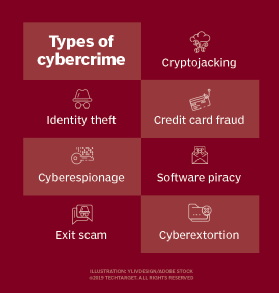
Dresses for teenagers can come in a wide variety of styles, cuts, and colors. These dresses can show off your individual style. You will find styles to suit your every style and taste in the Belk teen dress collection. Choose from romantic, boho and wonderland styles or go bold with a Pink Rose dress or Free People gown.
Old Navy
Old Navy will be moving from being a clothing company that caters to children to being one that caters to teenagers and young adults. On Monday, the clothing brand's new collection will be available in tween-focused styles. The clothing ranges in price from $10-$40.

Gap
Gap created a unique digital experience specifically for teens with the Club Roblox Boutique. You will be able "style yourself" in Gap Teen outfits by accessing this virtual store. There will be a juice bar, as well as a photo booth.
PacSun
If you're looking for affordable dresses for your teenage daughter, you might want to consider PacSun dresses. This specialty retailer offers a mix of emerging brands and trending fashions inspired by youth culture. The company also partners with leading brands in many markets to create curated collections and unique collaborations. The company was founded in 1980 in Newport, CA and currently curates from its headquarters in Los Angeles.
YesStyle
YesStyle's website design and business model has not changed in the past. They do have affiliates. However, they don't promote their products as extensively as Shein. Their merchandise is mainly from Asia, which includes Korea, Japan and China.

H&M
H&M was founded in Sweden in the late seventies by Erling Persson, who soon after purchases the mail order company Rowells. The company begins selling underwear and expands quickly internationally. It is listed at the Stockholm Stock Exchange in 1970. In 1974, the brand gets a new abbreviation H&M.
FAQ
Do you believe it is important to use coupons at grocery shops?
Coupons can be a good way to save money. However, you also need to remember that you can't expect to get every single discount possible. The best thing you can do is to try to match coupons with sale prices.
Coupons can be combined to increase savings. You could, for example, combine two $2/1 coupons to make one $4/3 coupon.
How can I protect my privacy online?
It's important for consumers to know what information they are giving away when they use an online service such as Amazon.com. Asking consumers if they would like to share their personal data with Amazon is a good idea. If you do not wish to provide this information, you might have to limit your shopping at sites where you feel comfortable sharing private data.
How to avoid fraud while using credit cards online?
You should always check the statements before you purchase online credit cards. Only pay the bills you owe. You should check your bank statement often to verify that there are no suspicious charges. If you are suspicious of unusual charges, please contact your card company immediately. They will often cancel the transaction, and then refund any money that was taken from your account.
You can report to your local police if you suspect you've been duped. You can file a report with the Federal Trade Commission (FTC) as well.
Statistics
- The tax is automatically added once you click the checkout button, so factor in an additional 20% when looking at the product page. (makeuseof.com)
- Beyond that, you'll be liable for a 25% import tax. (makeuseof.com)
- An approximately 90% increase in price affords Hotel X the opportunity of extreme profits under severe circumstances. (dos.ny.gov)
- The vast majority only change a password to protect privacy a few times a year (27 percent) or, more likely, never (35 percent). (pcmag.com)
External Links
How To
How to shop online safely
Online shopping can be one of the most convenient and cost-effective ways to purchase goods or services. However, online shopping comes at a high cost. There are benefits, but also dangers to shopping online. Identity theft is the most serious risk. Identity theft is the greatest threat. Identity thieves steal your personal information (names, addresses and credit card numbers) in order to either steal money from you, or take out fraudulent loan against your name. They then sell your stolen information on the black market. These tips will help you to be safe while conducting business online.
-
Secure websites. SSL encryption is offered free of charge by many online stores to protect customers’ information. All information you enter on their website, including names, addresses, phone numbers and credit card details, is protected by SSL encryption so that only you can view it. It prevents others from viewing what you put in. Make sure that you have a valid certificate issued from a recognized CA when choosing an online store. When you browse, look for the green padlock icon beside the URL bar.
-
Don't give away your password. When you first sign-up for a new account you'll receive an email asking for confirmation of your username and/or email address. These credentials must not be shared with third parties. Keep them safe! If someone takes your wallet, they may also have access to your accounts. Instead, save them securely on your computer. You should also change your passwords regularly - every three months is recommended.
-
Keep track of all your orders. If you're sending items to yourself or others, make sure you keep track of where you send those packages. Many people fall prey to fraud by believing that they sent something to themselves but it was actually sent to someone else. Before paying for shipping, make sure you verify the tracking number. Always get proof of delivery before you ship anything. If you are not satisfied with the service, contact the company immediately.
-
It is important to know who you are dealing. Many websites ask you for sensitive information, including your full name, date and birth, Social Insurance Number, bank routing number, and social insurance number. These details are used to identify you. Google "what information does a website need" to find out if it is. and you'll find plenty of answers.
-
Be wary of pop-up windows. Many websites bombard you with popups advertising special offers and deals. While some advertisements might appear legit, others will trick you into sharing private information. For example, a fake anti-virus program could ask for your banking information, credit card numbers, and social security number. To avoid being tricked, never click on links that appear suspicious.
-
Beware of Phishing Scams Phishing scams include hackers pretending to work for reputable organizations in order to get financial information from consumers. Phishers can send emails that look suspiciously like they are from banks or retailers. They encourage users to log on and update their account information. Once you've given away your information, the hacker has control over your finances. Hackers could even take over your bank accounts or transfer funds from one account to another. You have many options for identifying a scam email, including How to Spot Phishing Scams.
-
Do your homework. Always read all terms and conditions before you sign up for any deal. Clear and simple terms and conditions must be included in any contract that you sign. Read through all the information carefully, and ensure you know exactly what you're agreeing to. It is important to avoid hidden fees or charges in order to save money.
-
Take the time to shop around. Do not be afraid to shop around. Compare prices on many websites to find the best deal. When ordering multiple items, you can also compare shipping costs. Shipping rates can vary widely depending on which website is used. It's worth paying a little extra for fast shipping.